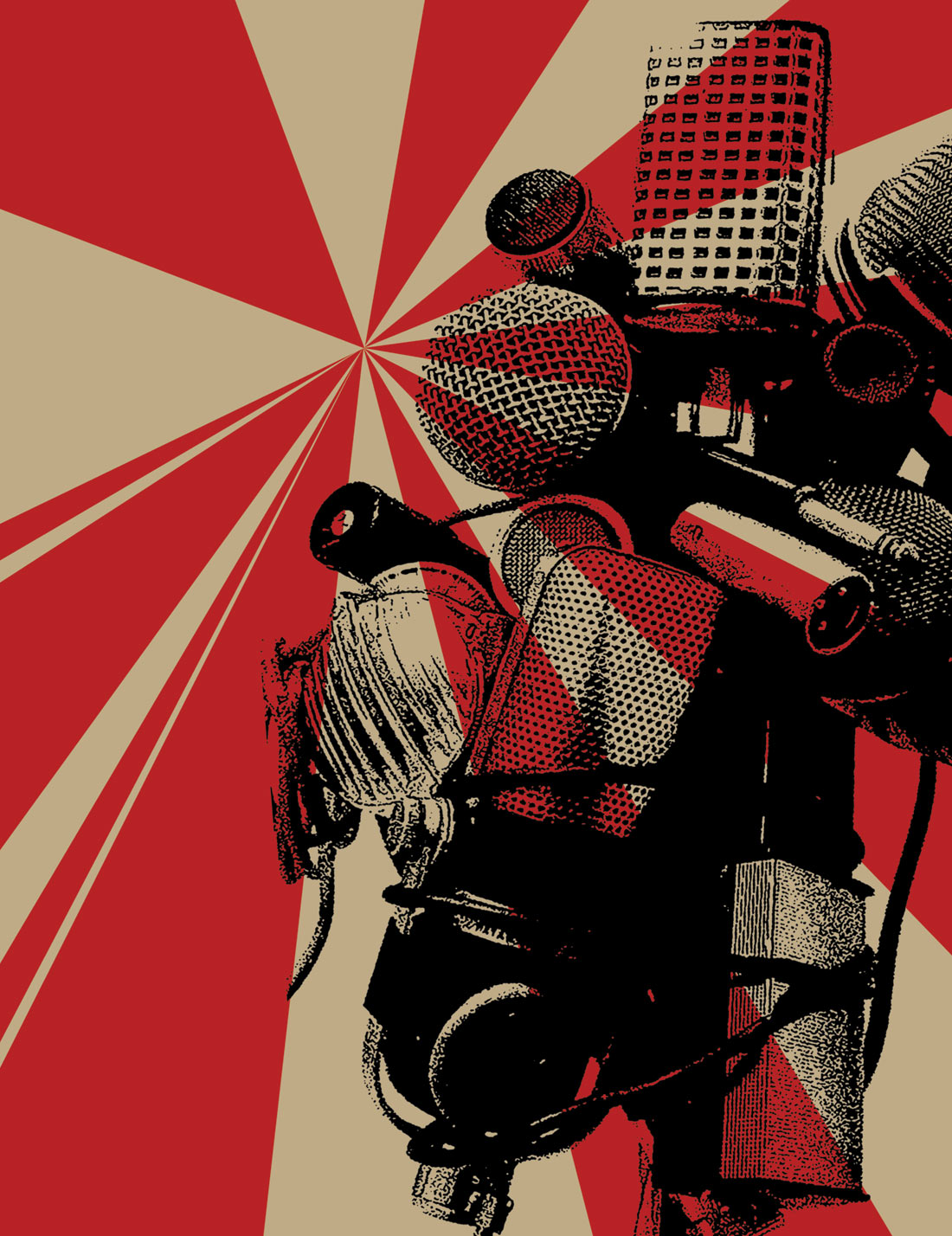The ATH-M50 "Professional Studio Monitor Headphones",
as Audio-Technica like to call them, really are usable for recording and mixing applications. They sound amazingly clear. The top end has a wonderful clarity to it, with an extra helping of airy highs. The midrange is exceptionally smooth, with none of the nasty peaks in the upper mids that spoil many other closed-back headphones. A gentle lift of the lower mids gives ample warning before things get muddy. Plus, the deep lows are all there, and they're not overly accentuated. All these traits add up to headphone monitors that translate very well by encouraging you to put effort into balancing your mix properly; and when you achieve the right balance, your reward is a splendid sound that you can enjoy for hours without ear fatigue.
The ubiquitous Sony MDR-7506 headphones, which I've used for 16 years, have accentuated upper mids that seem to sit deeper inside my head, making vocal work easier at the risk of vocals sounding too soft when the mixes are heard elsewhere. The ATH-M50 headphones, on the other hand, make you sweat the muddy stuff, like thumpy acoustic guitars, turbid electrics, murky basses, and chesty vocals. They're also much more comfortable on my big-eared, bespectacled head, with generous protein leather-clad padding on the headband and earcups. Protein leather is a polymer fabric originally developed for car seats and interiors, and understandably, it's pretty much rip-proof, unlike the thin material used for the MDR-7506 earpads that flakes off over time. Protein leather also wicks and disperses moisture well. (But no, it's not vegan.) I haven't had the ATH-M50 headphones long enough to discuss durability, but they utilize more plastic with more articulating parts than the MDR-7506.
Audio-Technica's ATH-PRO700 SV headphones are marketed to DJs. They're definitely skewed to the lows, and the highs are rolled off significantly to prevent you from going deaf cueing up tracks while the house speakers are thumping. I wanted to see if these might work as upscale replacements for the ATH-D40fs enhanced-bass headphones (Tape Op #29) I give musicians in my personal studio. So far, all tests have proven the ATH-D40fs to be better for tracking. The ATH-PRO700 doesn't have enough highs for vocal monitoring, and its coiled cable gets too easily tangled and makes too much noise when it slaps into things during spirited performances. To the ATH-PRO700's credit, its round earcups (although too small for my big ears) are mounted on dual-axis yokes allowing for all sorts of single or double-eared positioning. (Same with the ATH-M50, although its oval earcups are more generously sized but are therefore more prone to leakage when held against smaller heads.) The ATH-PRO700 too utilizes protein leather, while the ATH-D40fs has earpads that require frequent replacement due to flaking (like the MDR-7506). Also, the ATH-PRO700 has a volume advantage over both the ATH-D40fs and ATH-M50.
In general, I prefer open-backed headphones when listening to music for enjoyment (I'm a Sennheiser Open-Aire fan, having owned many pairs), despite their lack of deep bass. But the ATH-M50 closed-back headphones sound so nice and are so comfortable that the first time I put them on, I literally spent many hours listening to some of my favorite music. And once I started using them as complements to my ADAM S3A monitors while mixing, I began to appreciate their modest frequency-response accentuations, which can divulge characteristics of a mix that I might miss otherwise. Keep in
mind that for headphones, differences in head shape and ear geometry may lead to significant differences in opinion (similar to dissensions due to room geometry/treatment and placement for studio monitors), but a well-designed and implemented monitoring system will sound better in more situations than a lesser system. It's clear to me that the ATH-M50 is a superior product, and I'd say there's a pretty good chance you'd agree. Check 'em out if you need headphones for recording.
Tape Op is a bi-monthly magazine devoted to the art of record making.




_disp_horizontal_bw.jpg)